
Fleas are a common problem for dog owners, and they can cause a lot of discomfort for your furry friend. Fleas can transmit diseases like tapeworms and typhus.
The most effective dog flea killers are those that contain ingredients like pyrethrin, permethrin, and fipronil. These ingredients work by paralyzing the flea's nervous system, ultimately killing them.
Fleas can lay up to 50 eggs per day, which can quickly lead to an infestation. Regular grooming and bathing can help reduce the number of fleas on your dog.
It's essential to use a dog flea killer that is safe for your dog's age and health status. Some flea killers can be toxic to puppies or dogs with certain health conditions.
Prevention and Control
Prevention and control are key to keeping those pesky fleas at bay. The best way to deal with fleas is prevention, and flea and tick preventatives kill fleas that come in contact with your dog, preventing your pup from bringing them home in the first place.
Additional reading: Natural Flea and Tick Dog
Flea preventatives come in a variety of formats, including oral tablets, topical liquids, and flea collars. These products can be effective almost immediately, killing any new or existing flea that tries to bite your dog.
To keep your home flea-free, it's essential to use a combination of treatments, such as IGRs and sprays, and keep your home clean by vacuuming, washing, and more. Regular yard maintenance and removing debris can also help prevent flea infestations.
Here are some common types of flea and tick prevention products available:
- Pesticide-laden soaps, shampoos, dips, rinses, sprays, and powders
- Pesticide-laden collars
- Topical “spot-on” pesticides
- Long-acting oral medications
Why Is Prevention Important?
Prevention is key when it comes to keeping fleas and ticks at bay. Fleas and ticks are ectoparasites that live on the outside of their host, and their bites can cause severe allergies, dermatitis, anemia, itching, and infection.
Fleas and ticks can also harbor and spread a variety of diseases to dogs, including Lyme disease, Anaplasmosis, Bartonellosis, Rocky Mountain spotted fever, Tapeworms, and Babesiosis. Some of these diseases can even spread to people, making it crucial to keep fleas and ticks off your dog and out of your home.
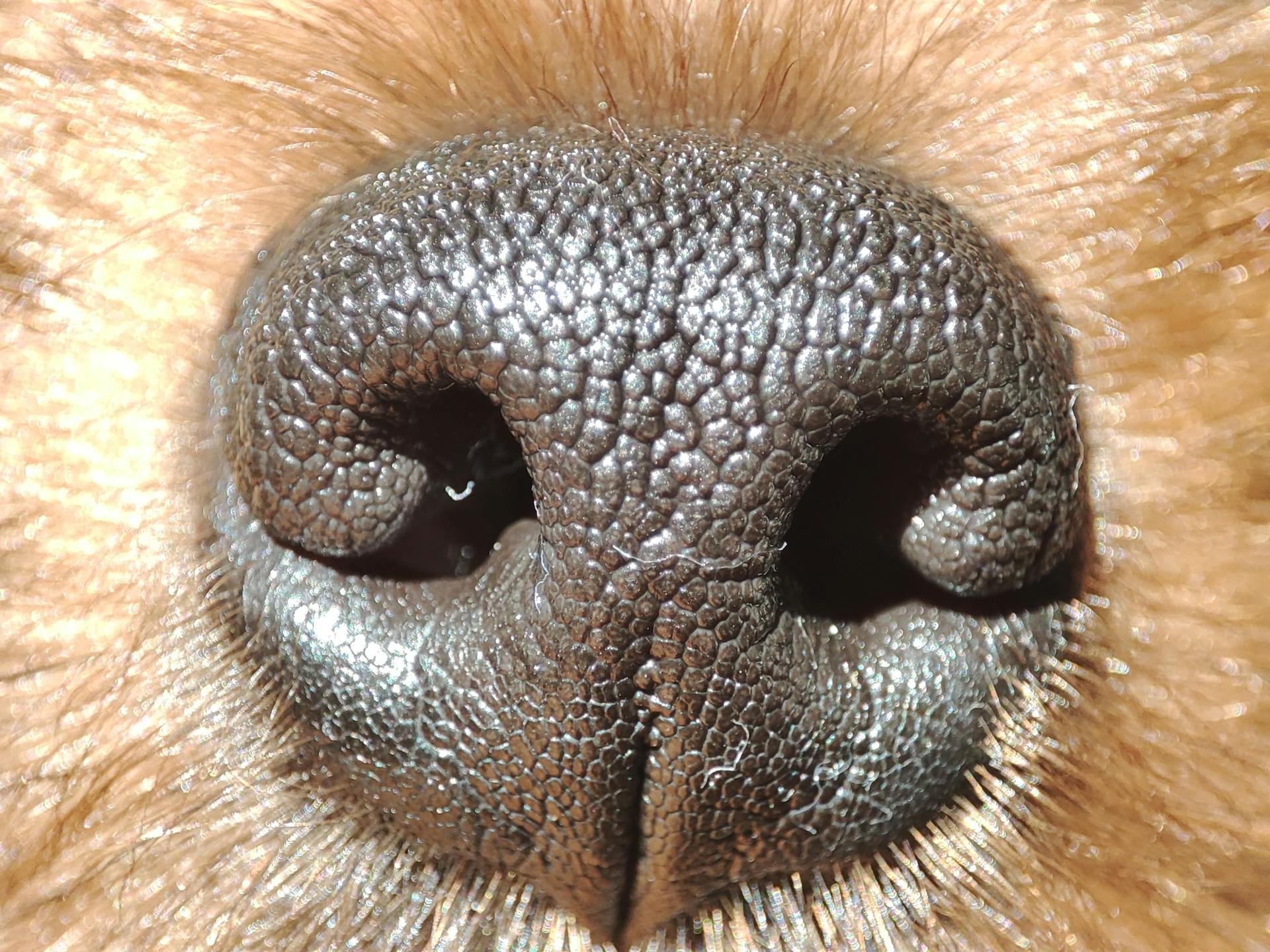
Preventing fleas and ticks is much easier than treating them. Flea and tick preventatives kill fleas that come in contact with your dog, preventing your pup from bringing them home in the first place.
Flea preventatives come in various forms, including topical liquid applicants, pills, and flea collars. It's essential to talk to your vet about the safest and most suitable preventative for your puppy or dog.
Prevention
Prevention is key when it comes to keeping your home and pets flea-free. Fleas and ticks can thrive in many geographical areas, so it's essential to start flea and tick prevention for your dog when they're 8 weeks old and keep them on prevention year-round throughout your dog's life.
Flea preventatives kill fleas that come in contact with your dog, preventing your pup from bringing them home in the first place. There are several options out there, from flea collars to topical liquid applicants and pills, so talk to your vet about the flea preventative that is safest and right for your puppy or dog.
For your interest: Flea Dog Treatment Home Remedy
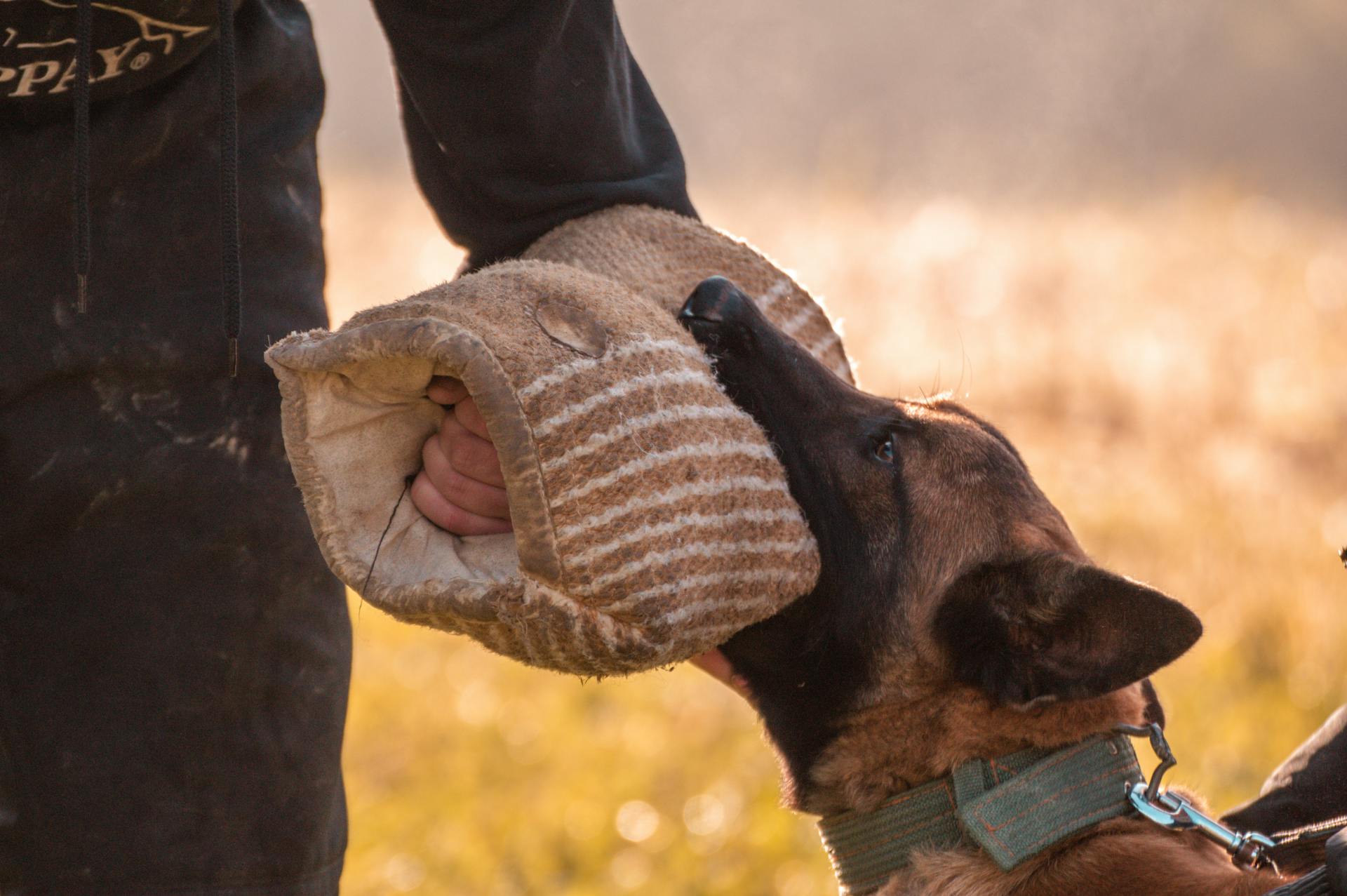
Some flea control products can be effective almost immediately, working by killing any new or existing flea that tries to bite your dog. However, it's still possible for these parasites to get inside the house by jumping onto your dog and abstaining from a tasty meal, instead jumping off before puncturing skin.
Flea control products come in a variety of formats, including veterinary prescription, oral tablets, topical liquids, flea collars, and home insect repellent. Here are some options to consider:
- Veterinary prescription
- Oral tablets
- Topical liquids
- Flea collars
- Home insect repellent
It's also essential to keep your home clean by vacuuming, washing, and regularly removing debris, especially in climates known for high flea populations.
Medicine Options
If you're looking for a reliable dog flea killer, you have several options to consider. Prescription flea and tick preventatives require a prescription from your veterinarian and are typically more effective and safer for your dog.
There are two main types of flea and tick preventatives: over-the-counter (OTC) and prescription. OTC options do not require a relationship with or prescription from a veterinarian, but it's always a good idea to check with your veterinarian to ensure they are a safe option for your pet.
Prescription flea and tick preventatives, on the other hand, are typically more effective and safer for your dog, and most veterinarians recommend them.
Here are some common active ingredients found in flea and tick preventatives:
- Imidacloprid
- Fluralaner
- Selamectin
- Indoxacarb
- Fipronil
- Permethrin
Combination Medicine
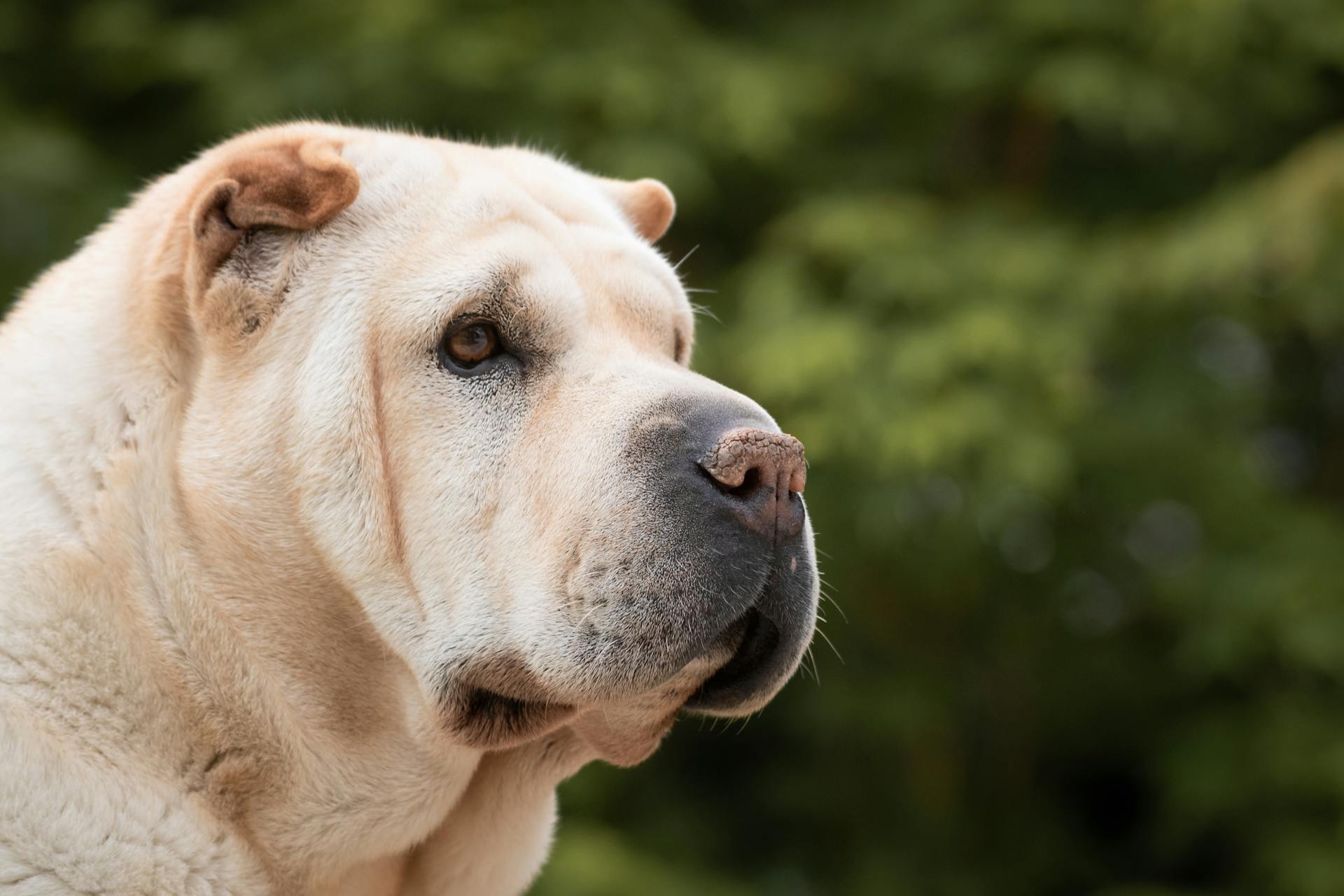
Combination flea and tick preventatives for dogs contain multiple ingredients to battle different types of pests. These prevention options may also provide additional protection against heartworms, skin and ear mites, and intestinal parasites.
Some combination products are effective against fleas, ticks, and heartworms, while others may also protect against roundworms, hookworms, and whipworms. For example, Simparica Trio treats fleas, ticks, heartworms, roundworms, hookworms, demodex, scabies, and ear mites.
Before choosing a combination product, it's essential to consult with your veterinarian to ensure it's a good fit for your dog. They will help you review the product label and confirm that the product is the correct species for your pet, within the correct weight range, and protects against the appropriate parasites.
Here are some examples of combination products:
Remember to always follow the product instructions and consult with your veterinarian if you have any questions or concerns.
Medical Conditions
If your dog has a history of seizures or neurologic disease, certain preventatives may not be the best option. These medications, called isoxazolines, can make it easier for dogs with these conditions to have a breakthrough seizure.
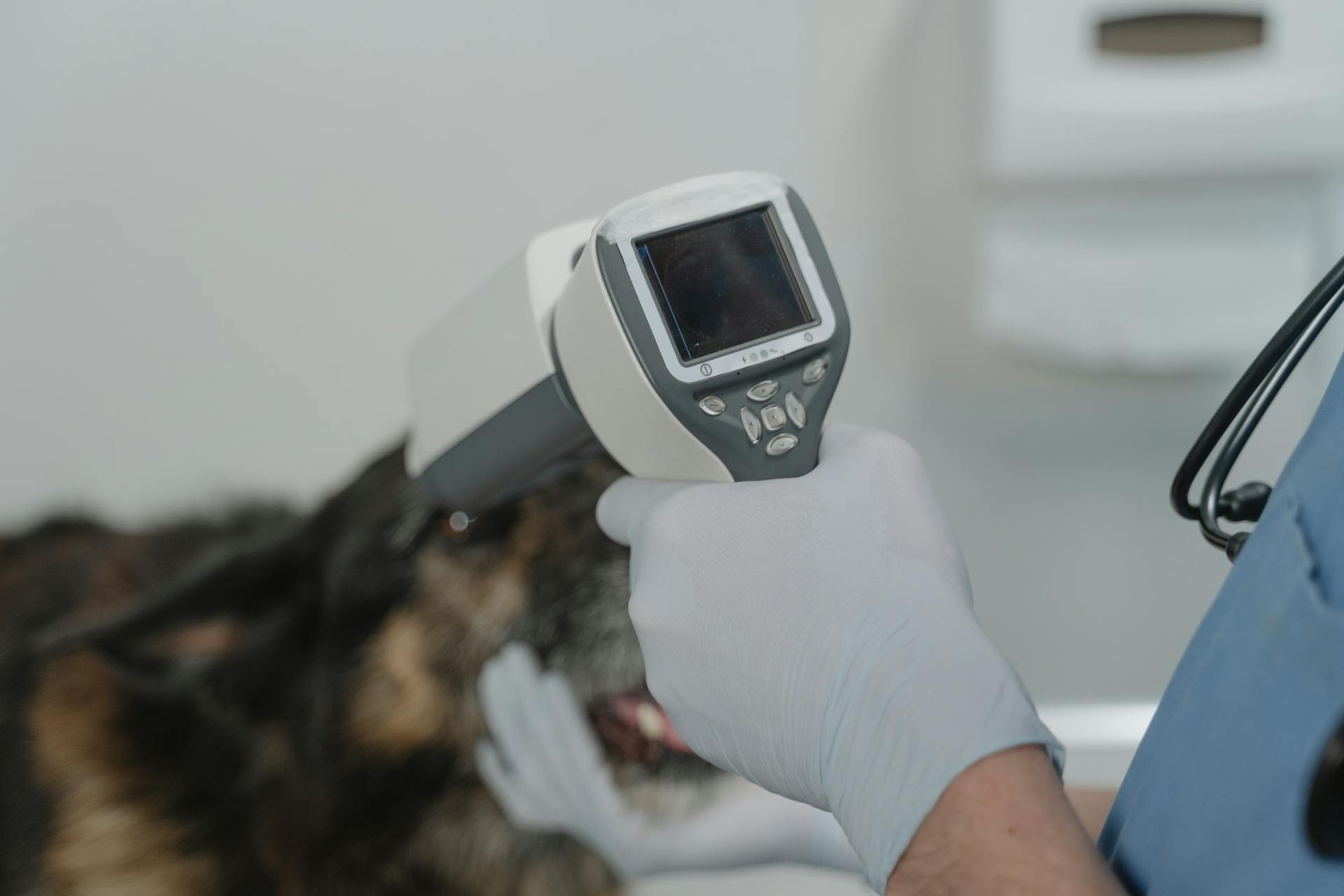
Some medical conditions require extra caution when using preventatives. If your dog has previously had an allergic reaction to the medication, it's crucial to discuss this with your veterinarian before administering any new preventative.
Dogs that are sick or underweight should not receive preventatives without a thorough discussion with their veterinarian. This is because their health status may affect how their body processes the medication.
Pregnant, nursing, or breeding dogs also require special consideration. No preventative should be used in these situations without consulting with a veterinarian first.
Here are some medical conditions that require extra caution when using preventatives:
- Seizures or neurologic disease
- Allergic reactions to medication
- Sickness or being underweight
- Pregnancy, nursing, or breeding
Medicine Types
There are different types of flea preventatives available, and it's essential to understand the options before making a decision.
Some flea and tick preventatives require a prescription, while others are available over the counter.
Pesticide-laden products, such as soaps, shampoos, dips, rinses, sprays, and powders, are still available, but they're often more toxic to animals and less effective than newer-generation products.
These early-generation insecticides may have contained highly toxic carbamates and bioaccumulating organophosphates.
Pesticide-laden collars, like the Seresto collar, are slowly releasing pesticides over a period of months.
Topical "spot-on" pesticides are administered in a small volume of fluid, with the active ingredients helping to kill adult parasites.
Some products also contain insect growth regulators, which prevent flea larvae from developing into adults.
Long-acting oral medications are available by veterinary prescription only and work by spreading systemically through the dog when ingested.
These products generally last about a month and kill parasites that bite the dog.
Here's a quick rundown of the different types of flea preventatives:
Life Cycle and Prevention
Fleas go through four life cycle stages: egg, larva, pupa, and adult. Each stage is crucial to understand when it comes to preventing and treating flea infestations.
The adult flea lives on animals, where it digests blood and lays its eggs. One female flea can lay up to 2,000 eggs throughout its lifespan. These eggs can hatch in just two days and disperse throughout the house every time your dog scratches, shakes, or lies down.
Flea control treatments work better during different stages of a flea's life cycle. Here's a breakdown of the stages and the treatments that target them:
Continuing to use a combination of these treatments and preventative measures will help keep fleas out of your home and off your pets.
When to Prevent
Start flea and tick prevention for your dog when they're 8 weeks old. This is because fleas and ticks can thrive in many geographical areas and carry diseases that can harm your dog and spread to people.
Fleas and ticks can be present year-round, so it's essential to keep your dog on prevention medication throughout their life. This will help prevent infestations and keep your dog and home safe.
Some diseases that fleas and ticks can spread to dogs include Lyme disease, Anaplasmosis, Bartonellosis, Rocky Mountain spotted fever, tapeworms, and Babesiosis. These diseases can be severe and even life-threatening, so it's crucial to take prevention seriously.
Here's a list of some common flea and tick prevention options:
- IGRs (insect growth regulators) and sprays
- Flea prevention medication
- Flea collars
- Regular yard maintenance and debris removal
Life Cycle
The flea life cycle is a crucial aspect of understanding how to prevent and eliminate these pesky insects from your home and pets. Fleas go through four distinct stages: egg, larva, pupa, and adult.
One female flea can lay up to 2,000 eggs throughout her lifespan, which can hatch in as little as one to 10 days. These eggs can disperse throughout your home and yard every time your dog scratches, shakes, or lies down.
The larvae stage is where the flea feeds on blood and flea dirt, and can survive for several days or up to a year in a cocoon. During this stage, they form a cocoon, often in a warm and cozy spot like your carpet or sofa.
Adult fleas use their overdeveloped legs to jump onto their canine host in search of a meal and a mate, and they cannot lay eggs until they eat. It's estimated that for every six fleas you see on your pet, there are 300 more fleas in your home.
Related reading: Dog Flea Remedy Home

Here's a breakdown of the flea life cycle stages and some effective treatments for each:
Identifying and Treating
If you notice your dog is excessively itchy or gnawing at its skin, it could be a sign of fleas. Flea eggs and dirt in the fur are also common indicators of an infestation.
Some symptoms of fleas on dogs can mirror other health issues, but if you notice any of the following signs, there's a good chance your dog is infested: excessive itching, gnawing at skin, frequent scratching at specific locations, flea eggs, flea dirt, hot spots, scabs, or skin irritation.
To effectively kill fleas on dogs, your vet may suggest several treatment options, including bathing your dog with lukewarm water and mild soap, using a fine-tooth flea comb to pick through your dog's hair, and doing routine checks to see how the infestation is clearing up.
Here are some common signs of fleas on dogs:
- Excessive itching (also known as pruritus)
- Gnawing at skin
- Frequent scratching at specific locations, especially the base of the tail
- Flea eggs (white specks) in the fur
- Flea dirt (dark specks) in the fur
- Hot spots, scabs, or skin irritation
- Skin edema, ulceration, and hair loss in dogs with flea allergies
Signs Your Has

If you're wondering if your dog has fleas, there are some common signs to look out for. Excessive itching is one of the most obvious signs, also known as pruritus.
Gnawing at skin is another sign that your dog might have fleas. This is often accompanied by frequent scratching at specific locations, especially the base of the tail.
Flea eggs, which appear as white specks, can be found in your dog's fur if they have fleas. Similarly, flea dirt, which looks like dark specks, can also be present.
Hot spots, scabs, or skin irritation are all potential signs of a flea infestation. In some cases, skin edema, ulceration, and hair loss can occur in dogs with flea allergies.
If you notice any of these signs, it's essential to consult with your veterinarian for a proper diagnosis and treatment plan.
Physical Appearance
Fleas are quite small, about the size of a pinhead, and have a dark copper hue. They're actually quite difficult to spot with the naked eye, especially when compared to flea eggs or larvae.

Fleas don't like light, so they tend to hide in shaded areas of a dog's coat, like skin folds and the base of the tail. You can use a fine-tooth flea comb to help spot them.
To spot fleas on your dog, check the areas where they tend to hide, such as along the shoulder blades, at the base of the tail, and down the back of the legs. These are common places to find them.
Fleas are active and move quickly, so you might be able to spot them as they jump through a dog's fur. This is one way to tell them apart from other types of parasites, like ticks, which are usually stationary.
If you look closely, you might notice tiny specs of flea dirt, which is actually the parasite's dark red excrement. This can be a sign of a flea infestation, especially if you also notice frequent scratching and biting.
How to Treat
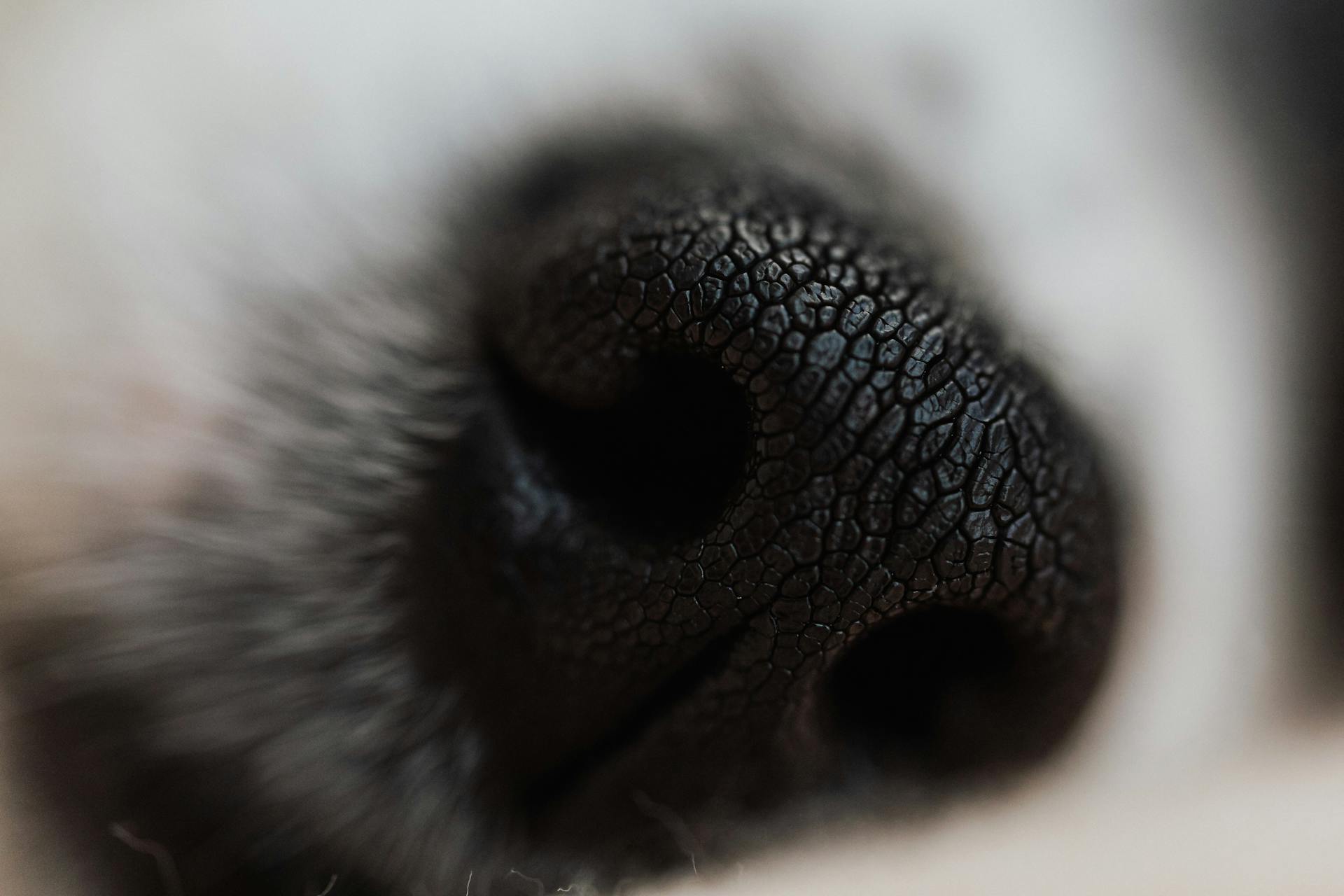
To treat your dog for fleas, you'll want to start with a bath using lukewarm water and mild soap. This can help drown adult fleas and loosen their grip on your dog's skin.
Using a fine-tooth flea comb is also a great way to pick through your dog's hair and catch those pesky fleas. Dip the comb in a solution of water and dish soap to catch the fleas and prevent them from jumping away.
You should do routine checks to see how the infestation is clearing up, and if your dog has a history of fleas, use a flea comb at least once every week until you're certain that both your home and your pet are flea-free.
If you're looking for a more convenient option, there are many spot-on flea products available that are approved for use on dogs, such as Frontline, Vectra, and Revolution. These products can control both flea eggs and adult fleas when used on a monthly basis.
Spraying your dog with an apple cider vinegar solution can also help deter fleas, although it won't kill them directly.
Related reading: Dog Flea Medicine for Cats
Natural and Home Remedies
Some dog parents turn to natural flea control methods, but it's essential to be cautious. Many natural flea and tick remedies, such as geranium and eucalyptus essential oil, can cause severe reactions in pets.
Before giving your dog any type of herbal treatment, check with your veterinarian to ensure their safety.
Expand your knowledge: Essential Oils for Dog Flea Repellent
Natural Control
Some natural flea control methods for dogs can be effective, but it's essential to check with your veterinarian before giving your pet any herbal treatment.
Geranium essential oil, eucalyptus essential oil, and pennyroyal essential oil are examples of natural flea and tick remedies that can cause severe reactions in pets.
How to Keep My Hair Naturally?
To keep your hair naturally healthy and looking great, try using a mixture of water and essential oils like rosemary, which can be found in a spray bottle. Simply spray the solution over your hair after washing to keep it looking shiny and healthy.
For more insights, see: Can a Dog Flea Live in Human Hair
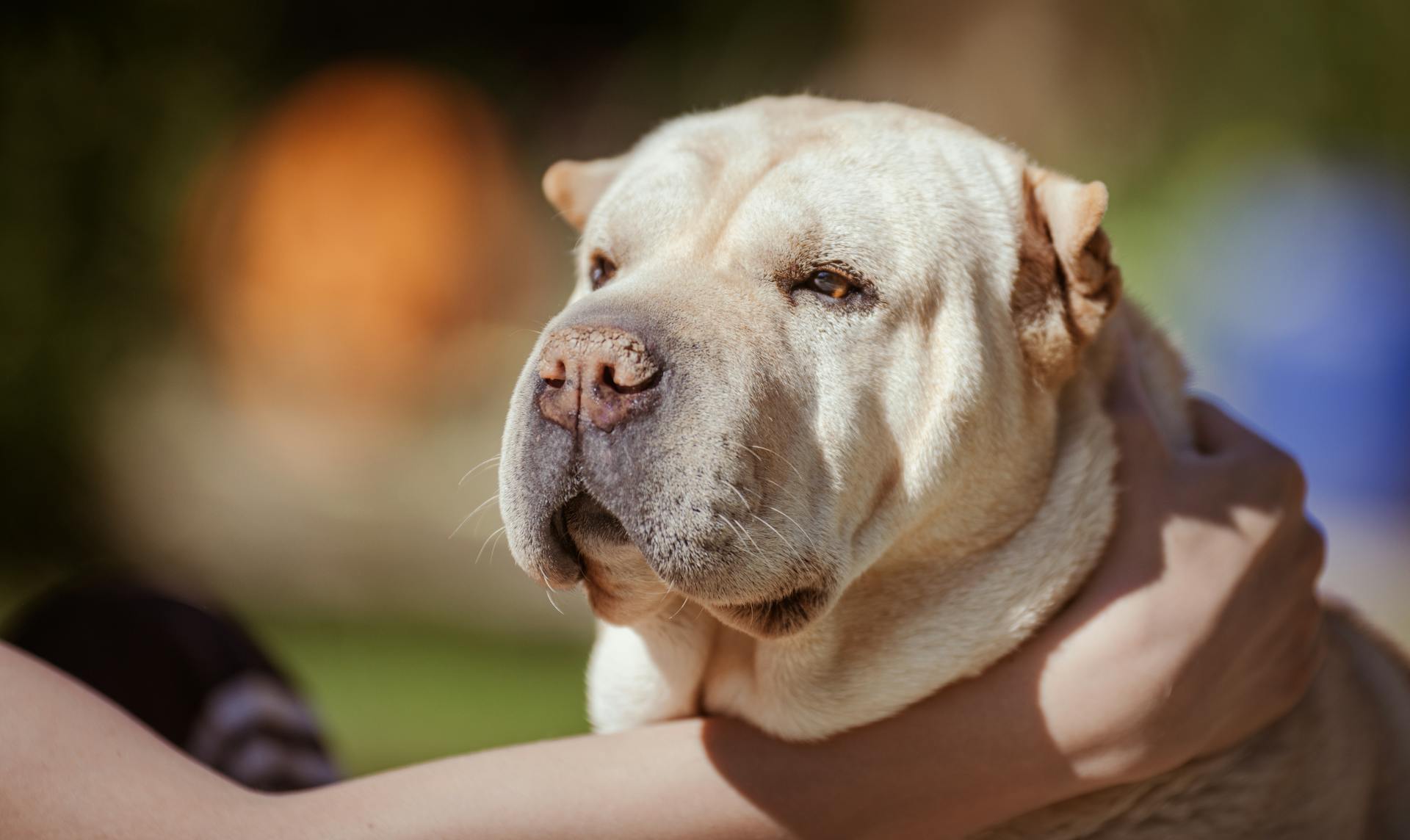
Rosemary essential oil can help promote hair growth and strengthen your hair follicles. I've tried this myself and seen great results.
Citronella oil is another great option for keeping your hair naturally healthy. It's a natural insect repellent, but it can also help keep your hair smelling fresh and clean.
Some essential oils, like peppermint, can be a bit too strong for hair, so use them sparingly. But when used in moderation, peppermint oil can help keep your scalp feeling cool and refreshed.
Remember to always dilute your essential oils with water before applying them to your hair, and do a patch test first to make sure you don't have any sensitivity.
See what others are reading: How to Keep Fleas off Your Dog in Florida?
Household and Pet Care
Getting rid of dog fleas in your home is a multi-step process that requires patience. It can take up to three to four months to get rid of an infestation, as you'll need to wait for all of the fleas in your home to go through their life stages.
If this caught your attention, see: How to Get Rid of Parasites on Dogs Skin
To eradicate fleas in your home, you'll need to wash all dog beds and soft dog toys in hot, soapy water and repeat this frequently until the infestation has ended. You should also wash your own bedding, throw rugs, bath mats, and any blanket or cushion where your dog likes to sleep.
Here are some key areas to focus on when vacuuming to get rid of fleas: carpets, hardwood floors, linoleum and tiled floors, curtains, and upholstered furniture. Don't forget to throw away the vacuum bag immediately in an outside garbage bin, and vacuum on a regular basis to be sure all of the stages are addressed.
In addition to vacuuming, you should also choose and apply an environmental flea control spray or fogger that will treat all stages of fleas, or call a local exterminator.
Explore further: How Often Should You Wash Your Dog with Fleas?
Application Method
When it comes to applying flea and tick preventatives to your furry friend, there are two main methods to consider: oral and topical.
Flea and tick preventatives come in two forms: oral and topical. Oral treatments are a convenient option for dog parents as they can be given like a treat.
Topical treatments are applied between the shoulder blades or down the back of your dog. If you have small children or other animals, be careful that they don’t touch or lick the product before it has time to dry.
Oral treatments are best for dogs that are picky eaters or have sensitive stomachs. If you use oral treatments, it’s best to monitor your dog to make sure they have eaten the entire tablet and do not throw it up before it can be absorbed into their system.
Here are some key differences between oral and topical treatments:
Remember, it's essential to choose the right application method for your dog's unique needs and lifestyle.
Lifestyle
As a pet owner, you know that your furry friend's lifestyle can greatly impact their overall health and well-being.
Working, herding, and hunting dogs may spend most of their day in the field, making them more prone to picking up fleas and ticks.
Dogs that spend most of their time at home, only venturing outside occasionally, are less likely to encounter these pesky parasites.
Regular grooming and veterinary check-ups can help identify and prevent flea and tick infestations, regardless of your dog's lifestyle.
Popular Prevention
You should start flea and tick prevention for your dog when they're 8 weeks old and keep them on prevention year-round throughout your dog's life. This is because fleas and ticks can thrive in many geographical areas and carry diseases that can harm your dog and spread to people.
The best way to deal with fleas is prevention, and there are several options available, including flea collars, topical liquids, and pills. You can talk to your vet about the flea preventative that is safest and right for your puppy or dog.
Preventive pet care is the best way to deal with fleas, and flea control products can be effective almost immediately. However, it's still possible for fleas to get inside the house by jumping onto your dog and abstaining from a tasty meal.
There are many types of flea and tick prevention products available, including pesticide-laden soaps, shampoos, dips, rinses, sprays, and powders, as well as topical "spot-on" pesticides and long-acting oral medications. Some products require a veterinary prescription, while others are available over-the-counter.
To keep your home and pet free from fleas, you should continue to use treatment options such as IGRs and sprays, keep your home clean by vacuuming, washing, and more, give your pet flea prevention medication, and keep your yard maintenance up and regularly remove debris.
Here are some popular prevention options:
Remember, it's always a good idea to talk to your veterinarian about how to get rid of fleas on dogs, as they can help you find the best and safest treatment option for you and your dog.
K9 Advantix
K9 Advantix is a topical product that repels and kills fleas, ticks, mosquitoes, and chewing lice, while also repelling biting flies.
It's fast-acting and begins to kill parasites within hours, which is great for pet owners who want to get rid of unwanted critters quickly.
This product should only be used in dogs and puppies over 7 weeks old and weighing more than 4 pounds.
Be sure to keep K9 Advantix away from cats, as it's highly toxic to them.
Explore further: K9 Advantix Dog Flea Treatment
Leaving Home
Flea preventatives can be effective almost immediately, but ongoing flea control may be necessary to protect your home, especially in areas with high flea populations.
When you leave home, it's essential to take steps to prevent fleas from getting inside. This includes treating your dog with a monthly preventative, such as Onguard Plus, which kills all fleas, ticks, sarcoptic mange, and chewing lice.
To keep your home flea-free, make sure to wash all dog beds and soft toys in hot, soapy water, and repeat this frequently. This will help kill any fleas that may be hiding in these areas.
Discover more: Home Remedies for Dogs with Flea Allergies
You should also vacuum all carpets, hardwood floors, and upholstered furniture, and throw away the vacuum bag immediately. This will help remove any fleas or eggs that may be present.
Here's a quick checklist to help you prepare for a flea-free trip:
- Treat your dog with a monthly preventative
- Wash dog beds and toys in hot, soapy water
- Vacuum all floors and furniture
- Throw away the vacuum bag immediately
By following these simple steps, you can help prevent fleas from getting inside your home and reduce the risk of an infestation.
Hot Water Safety
Hot water can be a game-changer when it comes to getting rid of fleas, but it's essential to use it safely.
Hot water can kill fleas, but be careful not to scald your dog's skin. This means you should only use hot water for environmental treatments, like washing your dog's bedding or toys.
Doing laundry is also an effective way to get rid of fleas, thanks to the combination of heat and laundry detergent. This is a great way to keep your home flea-free, especially if you have a dog that likes to snuggle up on your couch.
Additional reading: Does Salt Water Kill Fleas on Dogs
To use hot water safely, it's best to use warm or hot water for washing your dog's bedding and toys, but avoid using scalding hot water that could burn your dog's skin. This will help ensure that the hot water kills the fleas without causing any harm to your furry friend.
Here's a quick guide to hot water safety:
Remember, safety always comes first, especially when it comes to your furry friend.
House Pests
House Pests can be a real nuisance, and they're not just a problem for your furry friends. Fleas can infest your home in as little as 17 to 26 days, depending on the humidity and temperature.
Fleas lay their eggs in carpets, bedding, and furniture, which hatch and spread throughout your house. To get rid of them, you'll need to treat your home, not just your pet. Thoroughly vacuum your pet's favorite spots, including carpets and where they sleep, and immediately seal the vacuum bag in plastic to prevent fleas from escaping.
Readers also liked: Dog Flea Treatment Not Working
You'll also need to treat baseboards, windows, and doorframes, as fleas like to hide in these areas. Use foggers, powders, and sprays to kill fleas and inhibit their growth. Consistently vacuuming and washing your pet's bedding and toys will also help reduce the chances of another buildup.
Some effective flea treatment options include insect growth regulators, which prevent larvae from developing, and natural treatments like apple cider vinegar and flower-scented shampoos. Systemic treatments, such as oral medications, can also be effective in preventing flea eggs from hatching.
Here are some common areas to target when treating your home for fleas:
- Carpeted areas and pet beds
- Baseboards and windows
- Doorframes and other areas fleas like to hide
- Mattresses and upholstered furniture
Remember, getting rid of fleas can take time, so be patient and consistent in your treatment efforts. With the right combination of treatments and regular maintenance, you can keep your home and pet flea-free.
Bedding Options
Fleas can infest multiple areas in the home, especially carpeting, cushions, mattresses, bedding, pet beds, and upholstered furniture.

It's essential to choose bedding options that are flea-resistant or easy to clean, such as mattress protectors and bedding covers.
Fleas can live in your bed, so washing your bedding regularly, ideally in hot water, can help kill them.
A simple way to reduce flea infestations is to use a bed sheet that can be washed frequently.
Fleas can also infest pet beds, so it's crucial to wash these items regularly as well.
Using a mattress protector can help prevent fleas from getting into your bed and reduce the risk of infestation.
Curious to learn more? Check out: Flea Bed on Dog
Omnivorous Diet
Fleas are notorious for their ability to adapt to different environments, and their diet is no exception. They can live on other mammals and birds, including livestock and rodents.
Fleas are drawn to these animals because of their fur or feathers. This adaptability makes them a formidable pest in many households.
Fleas can easily jump from one host to another, spreading themselves far and wide. Their ability to thrive on various hosts is a key factor in their ability to infest homes.
Fleas are opportunistic feeders, taking advantage of whatever food source is available to them. This includes the blood of their hosts, which they feed on to survive.
Fleas are attracted to the warmth and moisture of their hosts, making them a common problem in homes with pets.
Are Cats the Same?
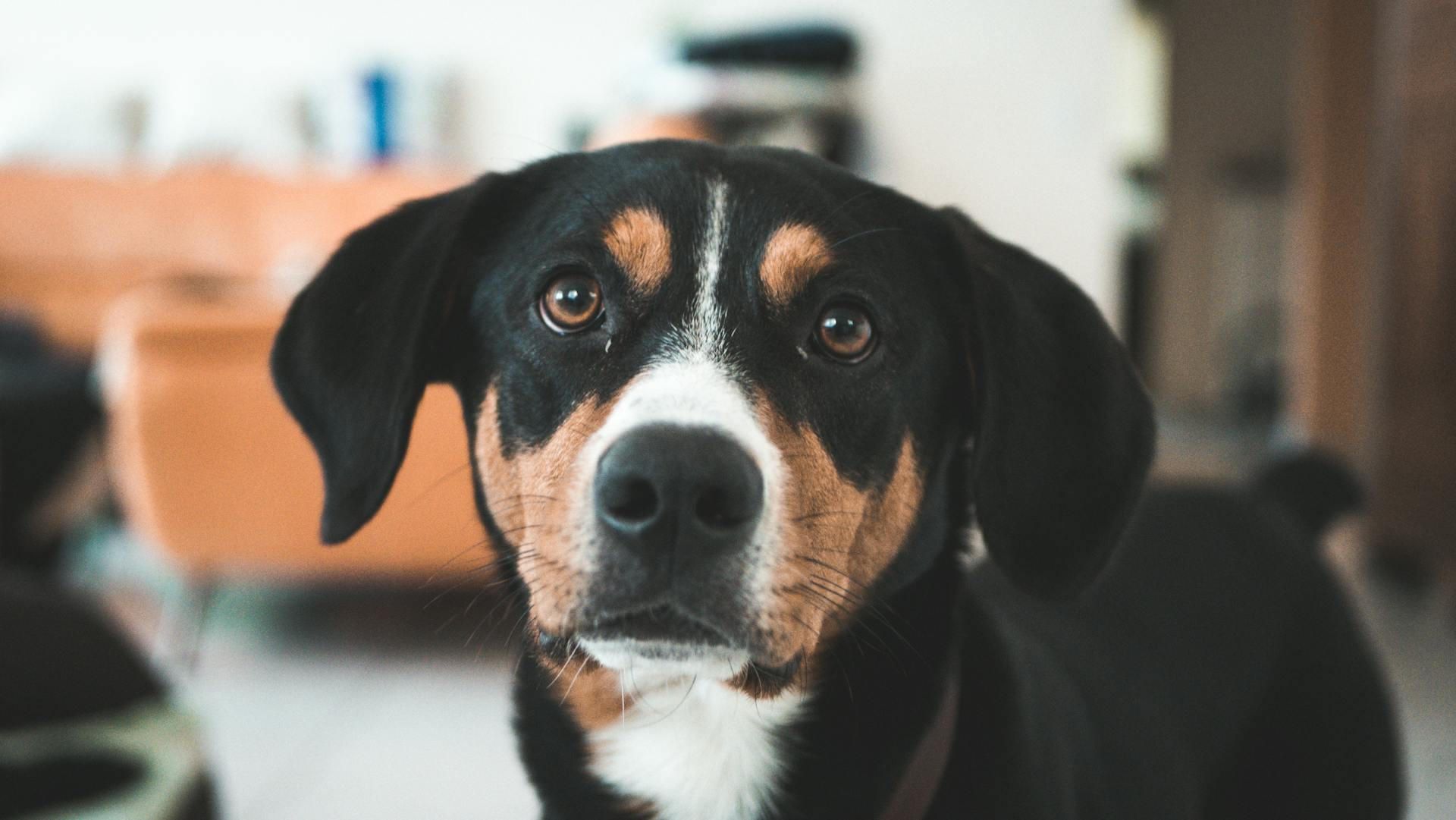
Cat fleas are a common household pest, but did you know they can infest other animals too? Cat fleas can also infest dogs and a variety of other species in addition to people.
Fleas can be a real nuisance in the home, and it's essential to understand that cat fleas are not the same species as dog fleas. Dog fleas are a distinct species, known as Ctenocephalides canis, while cat fleas are Ctenocephalides felis.
To keep your home and pets flea-free, it's crucial to identify the type of flea you're dealing with. This will help you choose the right treatment and prevention methods.
On a similar theme: Cat Fleas
Can Cats Survive?
Cats can survive flea infestations, but it's not ideal.
Fleas can cause discomfort and transmit diseases to cats, just like they can to dogs.
Cats may develop flea allergy dermatitis, a skin condition that causes itching, scratching, and hair loss.
If your cat becomes infested with dog or cat fleas, it's likely because your dog has already picked them up.
Your dog could become infested with dog fleas or cat fleas and then pass them on to your feline friend.
Readers also liked: Can Dogs Catch Fleas from Cats
Frequently Asked Questions
What kills fleas instantly on a dog?
Capstar, a single-use oral tablet, kills fleas on dogs instantly within 30 minutes. Administering Capstar requires containing your pet in a small area.
What is the best thing to get rid of dog fleas?
For effective flea removal, bathe your dog with lukewarm water and mild soap, or use dish soap to help drown adult fleas. However, consult your vet before using specialized flea products to ensure your dog's safety.
Does Dawn dish soap kill fleas?
Yes, Dawn dish soap can kill fleas on your pet, but it's not a reliable long-term solution for flea control.
Sources
- https://www.petmd.com/dog/general-health/flea-and-tick-prevention-and-treatment-dogs
- https://www.akc.org/expert-advice/health/how-to-get-rid-of-fleas/
- https://www.pawlicy.com/blog/how-to-get-rid-of-fleas-on-dogs/
- https://www.whole-dog-journal.com/health/what-is-the-best-flea-control-for-dogs/
- https://www.homedepot.com/c/ab/how-to-get-rid-of-fleas/9ba683603be9fa5395fab90219b8760
Featured Images: pexels.com


